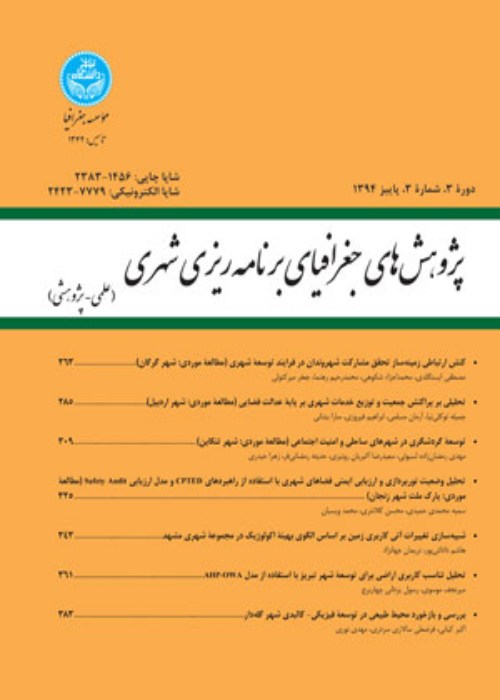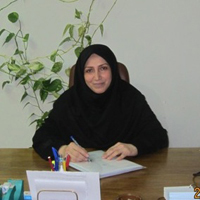Inclusive transportation: sharing public transportation spaces with the elderly, disabled, children and teenagers
Public transportation plays a central role in people's daily commute, connecting them to work, education, and leisure environments. It's essential to consider the specific needs of each user group when planning and providing these services. To address this challenge, inclusive approach is necessary to ensure the creation of barrier-free transport environments that are compatible with all citizens, regardless of their abilities and limitations. This research used the documentary method to investigate global experiences regarding the transport barriers of disabled people. The study also conducted 60 semi-structured interviews with 20 elderly people, 20 disabled people, and 20 children and teenagers. The aim was to reflect the voices and experiences of these people as representatives of marginalized groups. Through analysis of research literature and conducted interviews, it has been found that addressing certain issues can greatly improve the inclusivity of public transportation.. The elderly group expressed the need for optimized transportation environments through better design features and improved access. Disabled individuals prioritized employee training and the physical design of transportation environments. Children placed importance on increasing flexibility and enhancing security and safety measures. Considering the growing trend of aging in the country and the growing awareness of the need for the participation of all citizens in the economic and social life of societies, adopting an all-inclusive approach in creating and providing transportation environments can make it an attractive alternative for disabled and vulnerable people
Public transportation is essential for daily commutes, connecting people to work, education, and leisure activities. There is a strong connection between transportation accessibility and social exclusion experienced by people with disabilities, as recent research has shown. This issue has gained the attention of both scientific communities and political decision-makers in recent years. Just because someone has a disability, it doesn't mean that they are not entitled to a fulfilling life. Disability is not only determined by personal characteristics but is also affected by environmental and situational factors. Consequently, travel impairment should be considered a product of human-environment interaction, and people with disabilities may face transportation problems due to a lack of necessary transportation functions. The transport system must be accessible to all, particularly vulnerable groups and those with mobility impairments, and should be promoted as a reliable alternative to private transportation. Unfortunately, due to physical limitations and societal environments that assume high mobility, people with disabilities may become isolated from economic and political affairs, opportunities, services, and social networks.
The current research has used a mixed approach, combining both qualitative and quantitative data to investigate the characteristics of inclusive transportation spaces in Tehran. To determine the indicators for the qualitative part, document study and content analysis techniques were used, in addition to a survey. Face-to-face interviews and thematic analysis techniques were also employed to study the characteristics of the participating community. For the quantitative part, Shannon's entropy method was used. The research participants were elderly individuals (men and women over 65 years old), disabled individuals (men and women with physical and movement disabilities), and children and teenagers (boys and girls between 7 and 16 years old) who have experience using public transportation services in Tehran. A sample size of 20 people was considered for each study group (elderly, disabled, and children/teenagers), resulting in a total of 60 participants.
Conducting documentary studies and content analysis of research literature showed that dealing with issues such as flexibility, comfort, reliability, physical design, access, security and personal safety, economic issues, staff training, and readability are important indicators that are considered getting them can turn public transportation environments into inclusive spaces. Then an attempt was made to identify the concerns and needs of these people in public transportation environments by conducting interviews with the group of elderly people, disabled people, and children and teenagers as representatives of vulnerable groups. Physical design, comfort, and security, and safety were the most important issues mentioned by participants from all three groups to improve transportation. Although there was some overlap between the ideas and concerns presented, the demands of each group were prioritized differently. For example, the elderly group sought to optimize transportation environments by addressing design features as well as improving access, while the group of disabled people first referred to staff training and secondly to the issue of physical design. Children also considered increasing flexibility and improving security and safety as one of their most important demands. Then, in order to determine the priorities of inclusive transportation planning, taking into account the opinions of participants from all three groups, the weight of the components from the interviews, with the Shannon entropy of the case Calculated. Considering that the basis of entropy is based on the fact that the greater the dispersion in the values of an index, the more important that index is, it was very appropriate for the current research that was trying to pay more attention to the special needs of each group. The results of entropy showed that the highest weight belongs to the training of employees, and secondly, economic issues require more attention. Other weights also belong to the flexibility index, readability, security and safety, physical design, access, and convenience, and finally, the least amount of weight was given to the reliability index.
Considering the demographic changes and social developments such as the growing trend of population aging and the increasing awareness of the need for the participation of all citizens in the economic and social life of societies, adopting an all-inclusive approach in creating and providing transportation environments can be a suitable and appropriate response to promote Spatial justice in cities. This approach acknowledges that human abilities are not only diverse but also undergo changes along the way of life. This inclusive approach is a way of creating and providing environments that are inherently accessible not only to people without disabilities, but also to people with disabilities, the elderly, and many others, such as children, who are often left out by traditional design.
- حق عضویت دریافتی صرف حمایت از نشریات عضو و نگهداری، تکمیل و توسعه مگیران میشود.
- پرداخت حق اشتراک و دانلود مقالات اجازه بازنشر آن در سایر رسانههای چاپی و دیجیتال را به کاربر نمیدهد.



